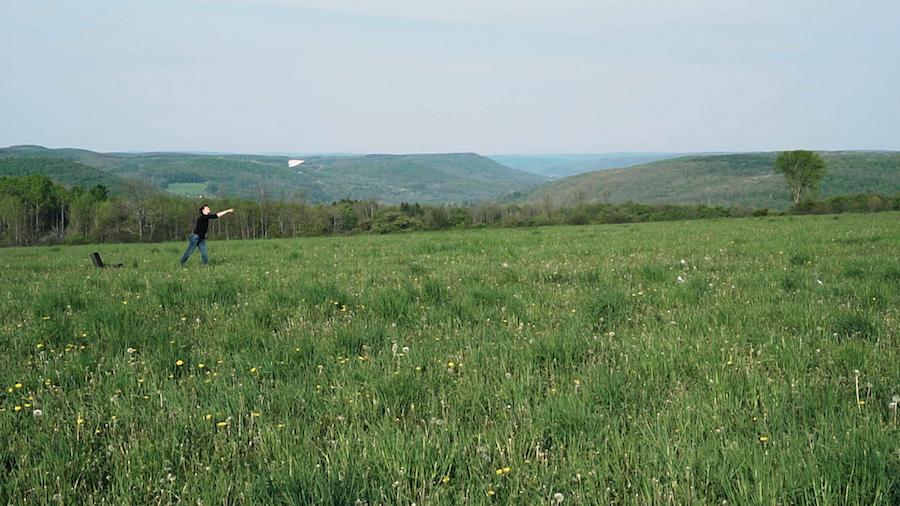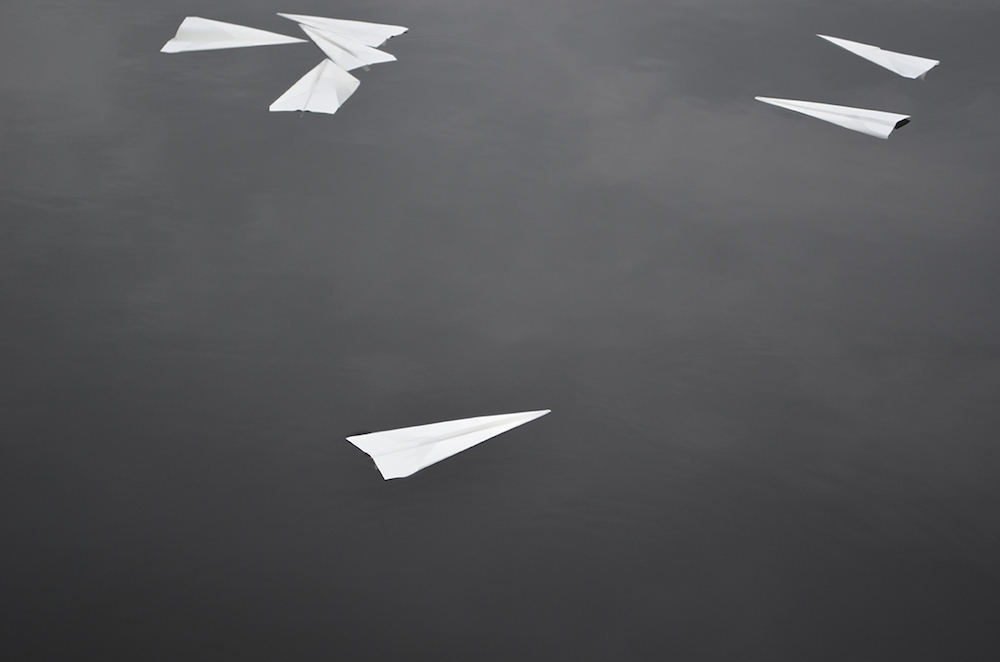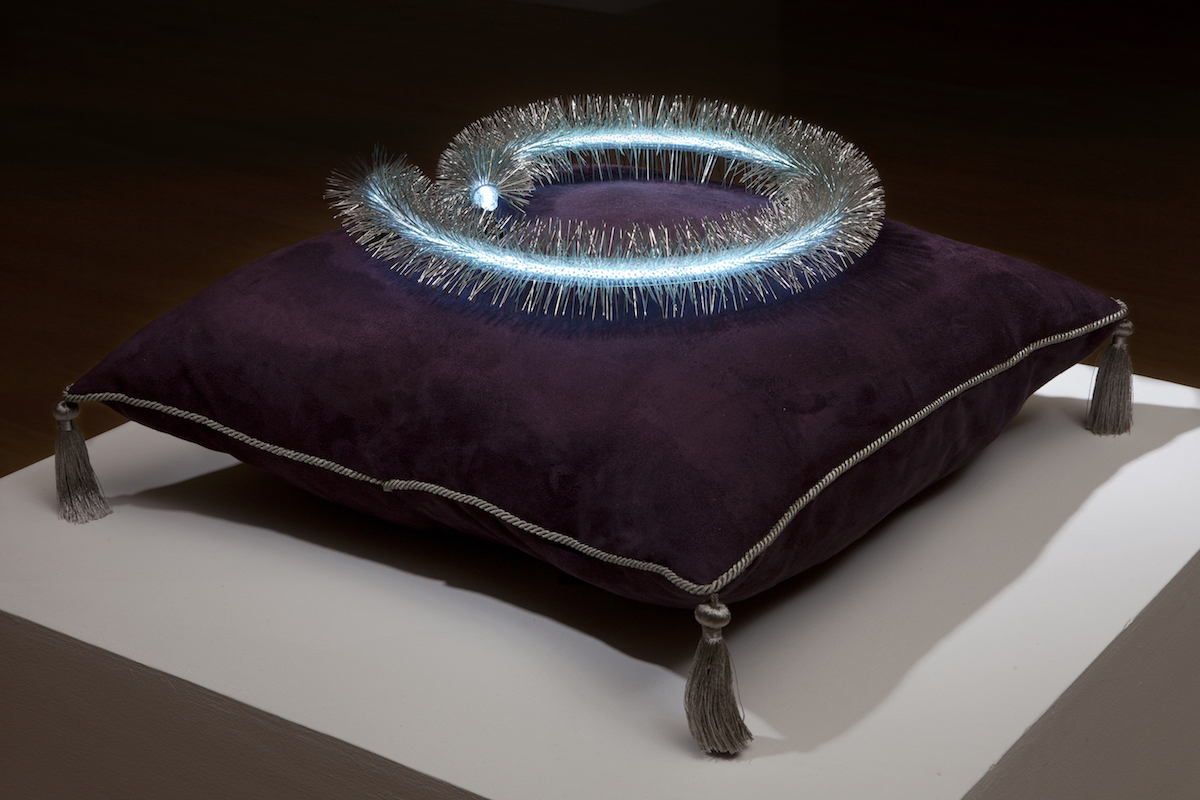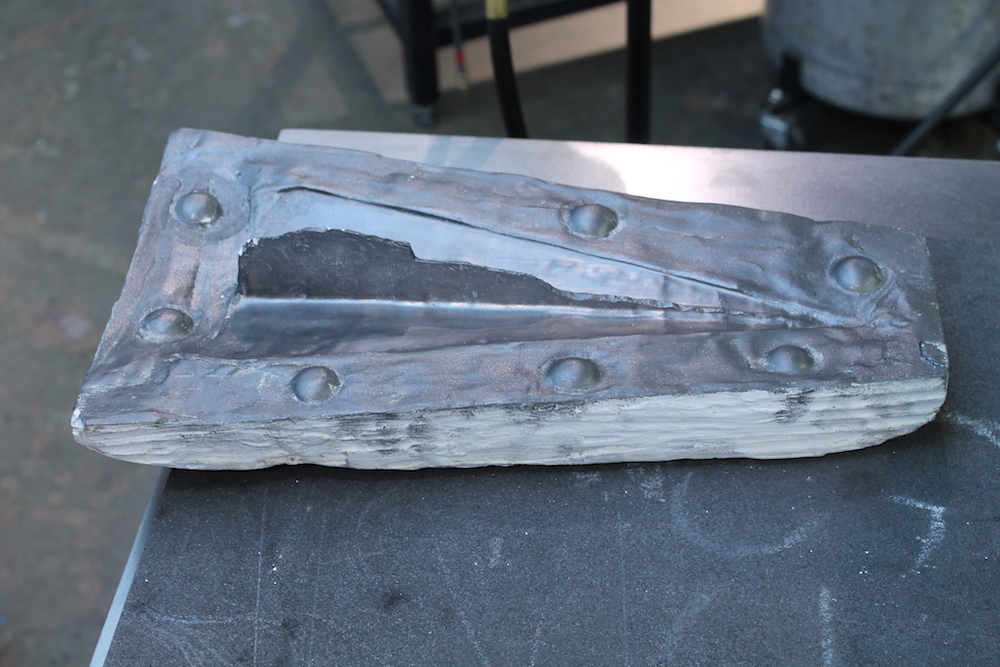A new Norfolk, Virginia, residency collaboration between The Chrysler Museum of Art, Glass Wheel Studio, and the Rutter Family Art Foundation, has culminated in “Between Further and Farther,” an exhibition currently on display at the Rutter-family-owned gallery and nightclub, Work|Release. Mixed-media artist Sarah Blood — the first recipient of the New Energy Artists Residency (NEAR) — used her residency to wrestle with ideas of actual and perceived distance and explore different ways to engage with the form of the paper airplane. The outcome, “Between Further and Farther,” incorporates mixed-media sculpture, large-format photography, video, and performance. Art goers of the Hampton Roads area can view the exhibition at Work|Release until September 24th.
Norfolk, Virginia has been the site of a significant arts push in recent years, with its New Energy Of Norfolk (NEON) arts district picking up steam since being officially commissioned in 2013. Anchored by the Chrysler Museum of Art and Harrison Opera House, the NEON district has incubated new arts venues like Glass Wheel Studio and Work|Release (both of which opened in 2015). “We’ve all been at the same table trying to get the arts district district in full effect,” Cheryl White, director of Glass Wheel Studio, told the GLASS Quarterly Hot Sheet in a telephone interview. “The residency wasn’t really one person’s brainchild…[we realized that] we have all the facilities, all we had to do was sit in one room and say ‘yes.’” With housing provided by the Rutter Family Art Foundation, studio space set aside in Glass Wheel Studio, and access granted to the Chrysler Museum Glass Studio’s hot shop, the organizations teamed up to provide a local residency program for experimentally-inclined mid-career artists.

Sarah Blood is an Assistant Professor of Sculpture at Alfred University whose work typically incorporates neon. This, combined with other factors, made her an ideal candidate for the residency’s inaugural year. “The NEON district is this new project that we’ve all been working really hard on,” said Charlotte Potter, Studio Manager and Programming Director at the Chrysler Museum Glass Studio, in a telephone interview with the Hot Sheet. “And the Chrysler Glass Studio just started a little neon shop because of this — we figured, we better have some neon if we’re going to be part of the NEON district. So Sarah made a lot of sense because she uses neon and electricity.” Blood’s project proposal, inspired by her experience as a Briton in America, also spoke to the community’s concerns. “I was moved by the proposal that she did about the idea of wanting to connect to people — and connect across the ocean,” White said. “Norfolk is a navy town, and I thought it was something that would connect with our community.”
Blood found the residency to be “fantastic.” In a telephone interview with the Hot Sheet, she said that, “everybody in Norfolk is so amazing and full of energy; there’s so much going on. It’s one of my favorite places in America.” She particularly enjoyed the solitude. “Being away from home, and all of the trappings that you have like paying bills, answering emails…helped me have a different mindset.” This allowed her to experiment, pushing her art into new areas. “One of the things I did while I was on the residency was go out to different landscapes… I was throwing paper airplanes into the landscape. I was really interested in that action and the physicality of that. But I didn’t think that it needed to be interpreted in sculpture in any way. It was a very pure activity.” This resulted in the artist’s first foray into “using video as the art piece.”
This experimentation, White emphasized, was a key concern for the residency. “It’s really about being a place that can support more innovative practices,” she said. Knowing that she wanted to work with paper airplanes, Blood set about to discovering new ways to cast them. “She was making paper airplanes but she was folding them out of copper,” said Potter. “Then she was embedding them inside bubbles and then putting single electrodes on the bottom so that the copper became conductive. She was trying to hot cast paper airplanes in different ways. She was really expansive about the ways that she attempted to scratch and sniff at this notion of the paper airplane being this antiquated way of translating and communicating with somebody.” Blood said that, “Initially I cast bronzes; I was making waxes; I made them out of glass.” Eventually she took a liking to concrete, using it as a metaphor for the weight of absence. “You associate concrete with being really hard, but actually, in this format, it’s quite fragile and brittle. Some of the edgings have been broken, and through the making process they’ve broken — and so I’ve repaired them… [by] gluing them back together with gold leaf. It’s about making the broken thing precious, and giving it that attention.”

As for why she chose the paper airplane, Blood seemed to find it quite simple. “Paper airplanes are a motif that everybody recognizes — universally accepted. There’s a playfulness, there’s a childlike-ness to paper airplanes. Theres nothing fancy about it. It’s just— it is what it is. It’s a beautiful object and it has a function.”
IF YOU GO:
Sarah Blood
"Between Further and Farther"
Through September 24, 2016
Work|Release
759 Granby Street
Norfolk, Virginia 23510
Tel.: 757.962.2992
Web: www.workreleasenorfolk.com









